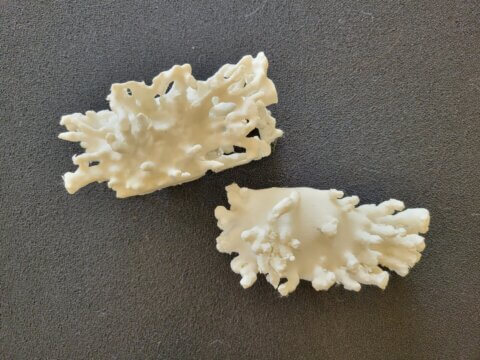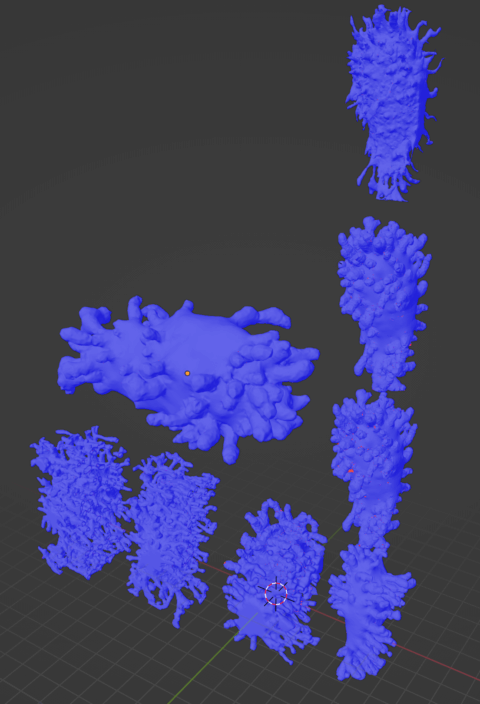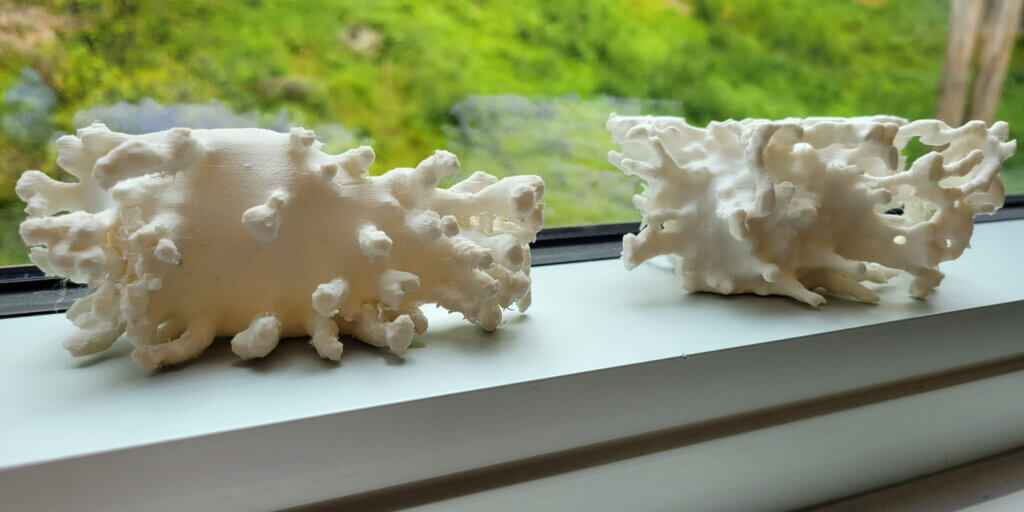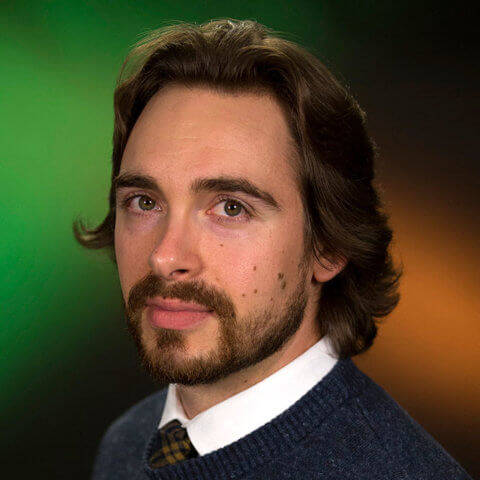This week’s maker is Cristal Yee, associate specialist from Dr. Tamara Alliston Lab, and chief strategist for the UCSF Musculoskeletal (MSK) Center. Let’s take a look at what they made.
Q: What did you make?
A 3D model of old and young osteocyte cells. Osteocytes are mature osteoblasts (bone forming) cells that are embedded within the bone matrix and comprise 90-95% of all bone cells. Osteocytes are mechanical-sensing cells, which functions to regulate both bone formation and resorption by regulating local mineral deposition. These remarkable cells also function as endocrine cells that secrete factors that regulate distant organs such as regulating phosphate transport in the kidney.

Q: Why did you want to make it?
I wanted to make this for educational purposes when teaching in the lab and for outreach events that the MSK Center participate in.
Q: What was your process?
With the help of Scott Drapeau, I described what I wanted and provided the OBJ files from our fluid dynamic modeling done on young and old osteocytes. Scott was able to make a 3D print from making an inverse model from the files I provided. A test print was made prior to making the final product. The model included supporting material due to all the small dendrites protruding from the cell body. The supporting structure was removed for the final product.

Q: What was the hardest part of the process?
The most difficult part of the process was making an inverse model from the files I provided. Due to the fluid dynamic modeling done on the osteocytes, the file outcome was of the surrounding osteocyte cell. Therefore, the negative space was what we needed to ‘fill’ to obtain the actual osteocyte. Scott had to manually work on his program to generate the 3D model that we needed. Another challenge was removing the supporting material as the dendrites were fragile and could break.
Q: What was your favorite part of the process?
My favorite part of the process was having an actual 3D model product in my hand. We were wanting to make a 3D print of osteocytes for a while, but didn’t know how to go about it.
Q: What do you want to make next?
I would like to make an Xbox controller stand.

